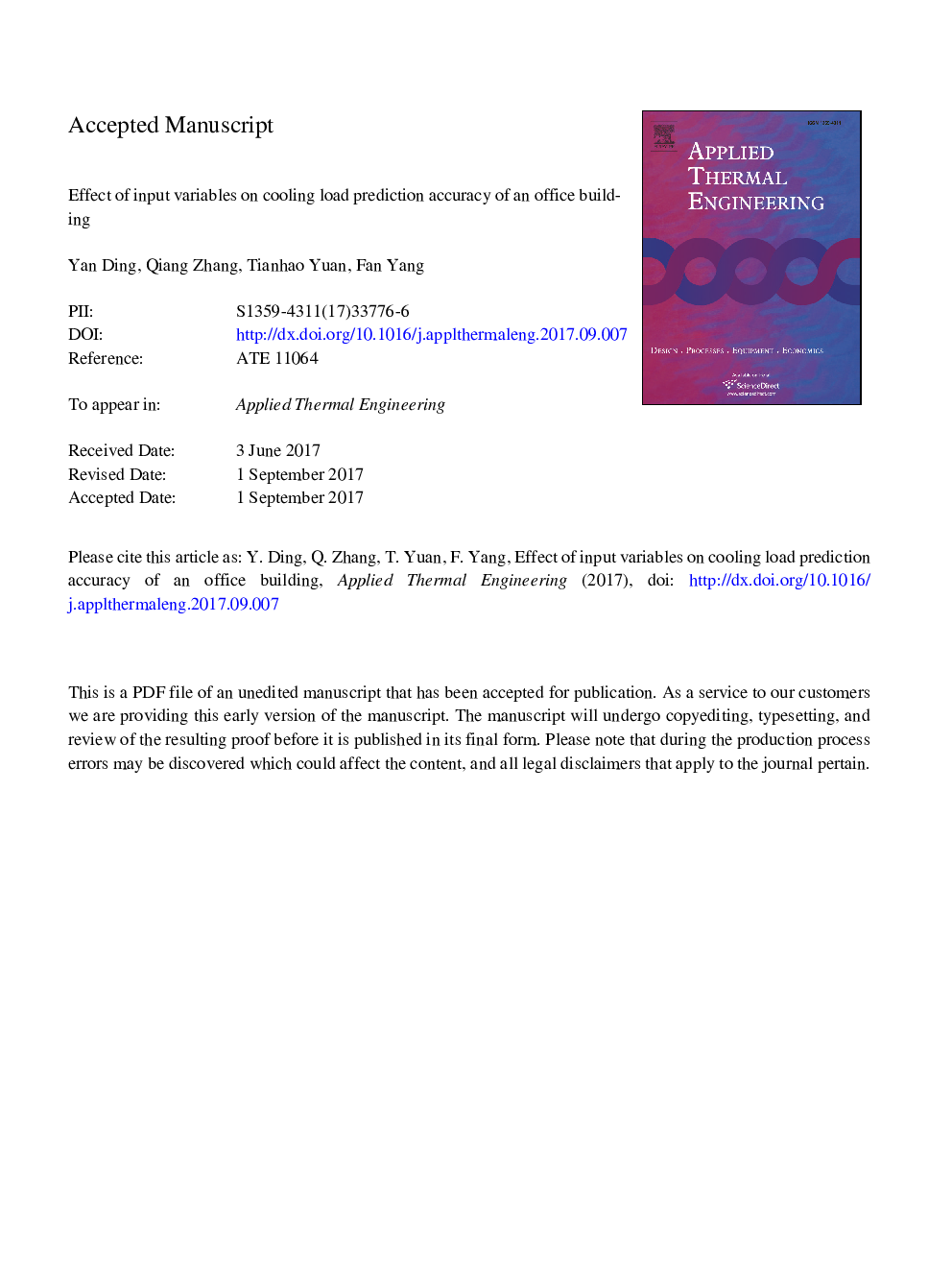| Article ID | Journal | Published Year | Pages | File Type |
|---|---|---|---|---|
| 7046581 | Applied Thermal Engineering | 2018 | 33 Pages |
Abstract
Data-driven models have been widely used for building cooling load prediction. However, the prediction accuracy depends not only on prediction models, but also on the selection of input variables. The aim of this study is to analyse the effect of various input variables on prediction accuracy. Eight input variables combinations are formed randomly and compared for prediction accuracy with ANN and SVM models. The training and testing data were obtained from an office building by field measurement. K-means and hierarchical clustering methods are applied to classify the input variables. Tedious information of congeneric variables is then excluded and the optimized combinations are obtained. It is concluded that the prediction models with optimized input combinations perform better than those without optimization. By comparing the different clusters of input variables, historical cooling capacity data is proved to be the most essential prediction inputs.
Related Topics
Physical Sciences and Engineering
Chemical Engineering
Fluid Flow and Transfer Processes
Authors
Yan Ding, Qiang Zhang, Tianhao Yuan, Fan Yang,
